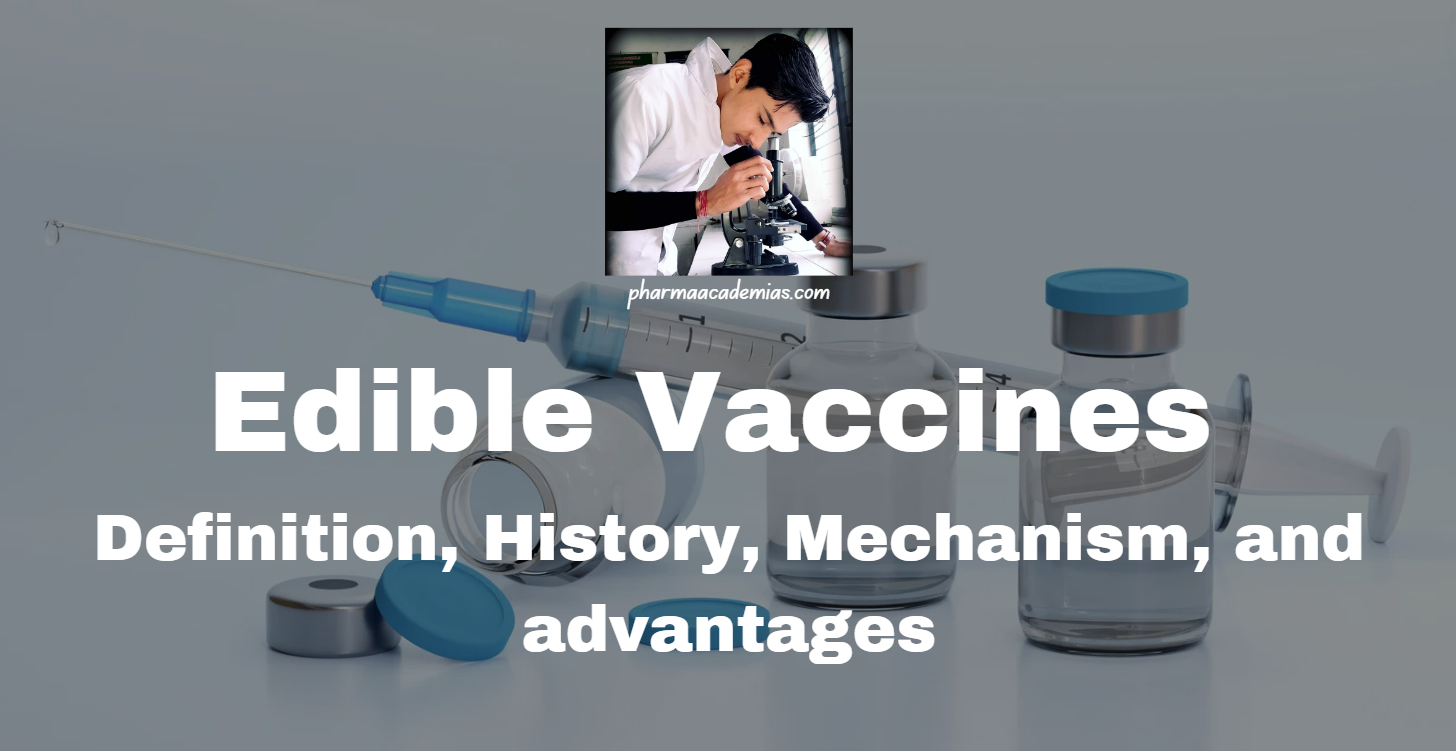Edible vaccines are a novel and innovative approach to vaccination where the vaccine is produced in genetically modified plants and consumed orally. This method aims to induce an immune response without the need for traditional injections, offering a more accessible, cost-effective, and patient-friendly alternative, especially in developing regions.
Historical Development and Concept
1. Initial Concept: The idea of edible vaccines was first proposed in the 1990s. Researchers envisaged using plants as bioreactors to produce antigenic proteins, which, when consumed, would stimulate an immune response. The concept was inspired by the potential to combine the benefits of oral vaccines (ease of administration, reduced need for medical infrastructure) with the advantages of recombinant DNA technology.
2. Pioneering Research:
Dr. Charles Arntzen: One of the pioneers in this field, Arntzen’s work in the early 1990s focused on expressing hepatitis B surface antigen in tobacco and potato plants.
The first successful demonstration of an edible vaccine was in 1996, where transgenic potatoes expressing the Escherichia coli heat-labile toxin B subunit (LT-B) induced an immune response in humans.
Mechanism of Action:
1. Genetic Engineering:
Gene Insertion: Genes encoding the desired antigen (the component of the pathogen that triggers an immune response) are inserted into the plant genome using techniques like Agrobacterium-mediated transformation or gene gun methods.
Expression Systems: Promoters specific to plants ensure that the antigen is expressed in the edible parts of the plant, such as fruits, leaves, or tubers.
2. Immune Response:
Oral Administration: The plant material containing the antigen is consumed orally.
Mucosal Immunity: The antigens are absorbed through the mucosal lining of the gut, stimulating both systemic and mucosal immune responses. Mucosal immunity is crucial for protecting against pathogens that enter through mucosal surfaces.
Advantages of Edible Vaccines:
1. Ease of Administration:
Non-Invasive: Eliminates the need for needles, reducing the risk of infections and improving patient compliance, especially among children and needle-phobic individuals.
No Need for Trained Personnel: Can be administered without the need for healthcare professionals.
2. Cost-Effectiveness:
Low Production Costs: Plant cultivation is generally cheaper than traditional vaccine production methods, which require sterile conditions and complex purification processes.
Reduced Storage and Transport Costs: Edible vaccines can be stored and transported without refrigeration, making them particularly beneficial in developing countries.
3. Scalability:
High Yield: Plants can be grown in large quantities, providing a scalable solution to meet global vaccine demands.
Rapid Production: Can be rapidly produced to respond to emerging infectious diseases.
4. Enhanced Stability:
Stable Antigens: Plant cell walls can protect antigens from degradation, enhancing the vaccine’s stability during storage and transportation.
Challenges and Limitations
1. Dose Standardization:
Variable Antigen Levels: Ensuring consistent levels of antigens in each plant or plant part is challenging, leading to difficulties in standardizing dosages.
Dosage Control: Accurate dosing can be problematic due to natural variations in plant material.
2. Regulatory Hurdles:
Approval Process: Regulatory approval for genetically modified organisms (GMOs) and edible vaccines is complex and varies between countries.
Safety Concerns: Potential risks associated with GMOs need to be thoroughly assessed, including allergenicity and environmental impact.
3. Public Acceptance:
GMO Controversy: Public skepticism and resistance to genetically modified foods could hinder the acceptance of edible vaccines.
Education and Awareness: Extensive public education campaigns are needed to promote understanding and acceptance of edible vaccines.
4. Immune Tolerance:
Oral Tolerance: Repeated oral exposure to antigens could lead to immune tolerance rather than an active immune response, reducing vaccine efficacy.
Applications and Current Research:
1. Target Diseases:
Infectious Diseases: Edible vaccines are being developed for a range of infectious diseases, including hepatitis B, cholera, measles, and HIV.
Diarrheal Diseases: Vaccines for enterotoxigenic Escherichia coli (ETEC) and rotavirus are under investigation, targeting significant causes of childhood mortality in developing countries.
2. Plant Platforms:
Common Plants: Potatoes, tomatoes, bananas, lettuce, and rice are among the plants explored for edible vaccine production.
Research Focus: Research is focused on optimizing antigen expression, stability, and immune response efficacy.
3. Clinical Trials:
Human Trials: Some edible vaccines have progressed to human clinical trials. For example, potatoes expressing LT-B antigen have shown promise in inducing an immune response against ETEC.
Animal Studies: Extensive animal studies are being conducted to evaluate the safety and efficacy of various edible vaccine candidates.
Future Prospects:
1. Improved Technologies:
Advanced Genetic Tools: CRISPR/Cas9 and other gene-editing technologies could enhance the precision and efficiency of genetic modifications in plants.
Synthetic Biology: Synthetic biology approaches could optimize metabolic pathways in plants to increase antigen production.
2. Combating Emerging Diseases:
Rapid Response: Edible vaccines could be rapidly deployed in response to emerging infectious diseases and pandemics.
Personalized Vaccines: Future developments could enable personalized vaccines tailored to individual immune profiles and specific health needs.
3. Global Health Impact:
Equitable Access: Edible vaccines have the potential to democratize vaccine access, providing affordable and easily administrable vaccines to underserved populations worldwide.
Integration with Public Health Programs: Integrating edible vaccines into existing public health frameworks could enhance immunization coverage and disease prevention efforts.
Conclusion:
Edible vaccines represent a promising frontier in immunization technology, offering significant advantages in terms of accessibility, cost-effectiveness, and ease of administration. While there are challenges to overcome, ongoing research and technological advancements hold the potential to make edible vaccines a viable and impactful tool in global health, particularly in the fight against infectious diseases and in addressing vaccine distribution inequities. As the field progresses, edible vaccines could revolutionize the way we approach vaccination and disease prevention, contributing to a healthier and more equitable world.

